“Lisa Akoya: You’ve Never Seen Anything Like It,” trumpeted the lead image. Ten-year-on translation: “You’ve never seen it.”
Inspired design, cutting edge ideas, elegant sleekness, and unique features set the French LSA seaplane apart and may inspire successive designs but Lisa’s Akoya never made it to market.
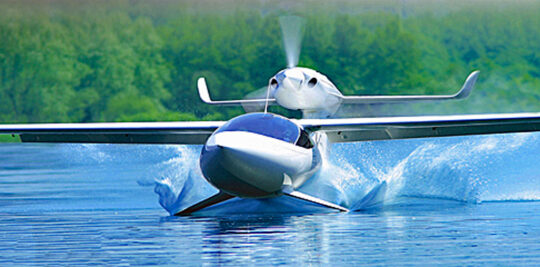 No wonder,” exclaimed some! More than a decade back, they approached a retail price of $400,000. After ten years of dollar inflation, that number would be way past $500,000 today.
No wonder,” exclaimed some! More than a decade back, they approached a retail price of $400,000. After ten years of dollar inflation, that number would be way past $500,000 today.
Remarkable as it may be to those of us with normal incomes, buyers for high-end products seem often to emerge. Cirrus and their steady sales of million-dollar-plus four seaters is proof of that. To appeal to such well-heeled pilots, a company better deliver a beautiful, functional, well-supported aircraft. Doing that expertly at a premium level gets expensive.
Here’s Looking at Lisa
Lisa Akoya dates to the very beginning of Light-Sport Aircraft. In 2004, two aviation enthusiasts, Erick Herzberger and Luc Bernole, established Lisa Airplanes in the heart of the French Alps. Akoya developed “a patented Multi-Access technology allowing Akoya to set down with the same agility on water, land or snow without any prior modification of the aircraft.” This unique innovation is based on a combination of retractable landing gear, hydrofoils and retractable skis (video demonstrates gear retract).
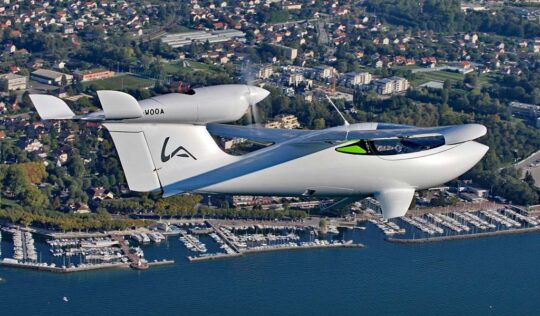 “From the cockpit to the wingtips through the Seafoils, a number of technical innovations offer elegance, operating convenience, and exceptional aerodynamic performance,” claimed Lisa. They promoted a top speed of 156 miles per hour (135 knots), range of 1,250 miles, with fuel consumption of 4.2 gallons per hour. “Akoya takes off and lands in as little as 650 feet,” they said (full specs on image below).
“From the cockpit to the wingtips through the Seafoils, a number of technical innovations offer elegance, operating convenience, and exceptional aerodynamic performance,” claimed Lisa. They promoted a top speed of 156 miles per hour (135 knots), range of 1,250 miles, with fuel consumption of 4.2 gallons per hour. “Akoya takes off and lands in as little as 650 feet,” they said (full specs on image below).
Arguably, one of the most distinctive design aspects of Akoya is its tailfin-mounted, forward-facing Rotax engine. Others have done something similar (Equator is an innovative example using electric propulsion) yet Lisa engineers beautifully integrated the powerplant. Interior noise was significantly reduced by this location, they noted.
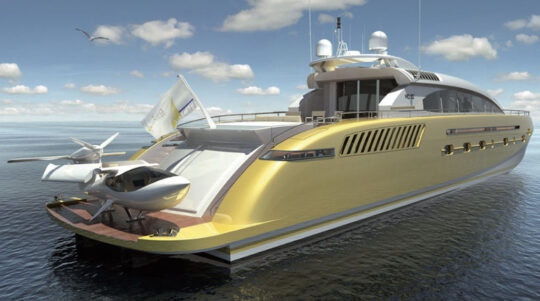
Lisa developers boasted Akoya’s 180-degree panoramic view through its tinted bubble canopy and a cockpit specially designed to combine both aesthetics and comfort. The cockpit is 51.6 inches wide, spacious even compared to the largest LSA.
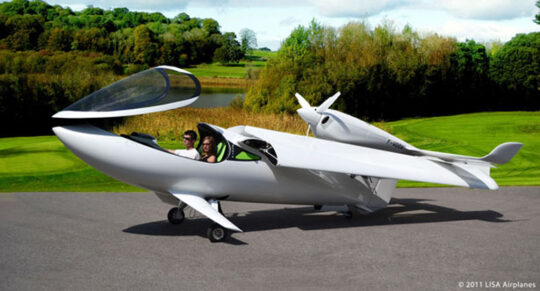
Dave also observed, “Akoya has cantilever wings, which can be folded for ease of storage or trailering. Akoya uses all carbon-fiber construction, with metal parts produced from titanium. Seating is side by side, with dual controls, flaps, and a center mounted throttle, and adjustable rudder pedals. Power is supplied by a Rotax 912 ULS or iS engine.”
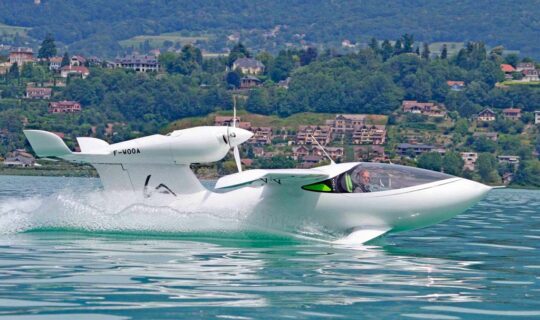
“The technology for the entire package is patented and called Multi-Access,” Jim continued, “not the most compelling name but what the hey, look at how cool those little moustache water wings look sticking out from the hull!l
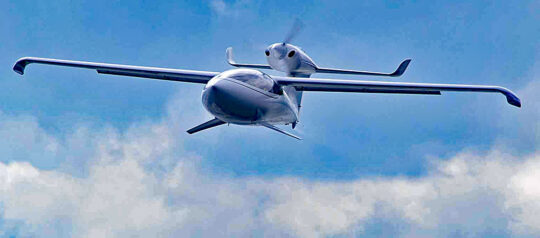
To prevent pilot error in re-assembling a folded-wing Akoya, designers added an ignition interlock system, position indicators, and a wing position locking system.” Folding wings have strong appeal but add complexity that demands more oversight and/or a religiously-followed checklist.
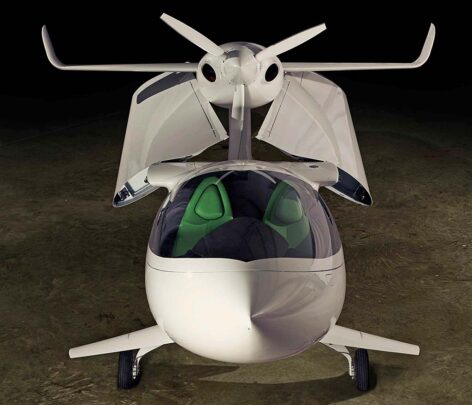
In February of 2013, our friends at AVweb uncovered news that Akoya would be acquired by investors in China. A trend was underway ten years ago, leading large Chinese businesses to purchase several famous aviation brands including Continental Motors, Cirrus, and Mooney, among others. AVweb went on to report, “According to French and Chinese online sources, production will remain in France.” Unfortunately, Akoya never built another aircraft.
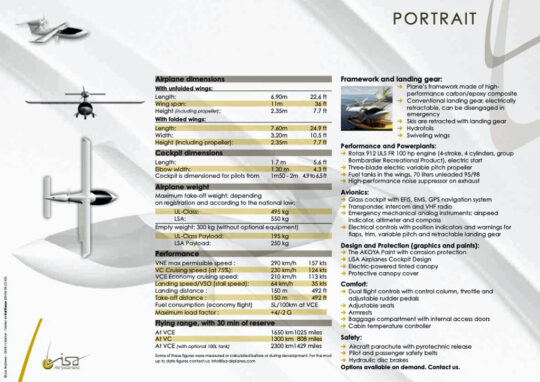
The experience gained by the two French developers of Akoya could influence downstream designs in the way aviation has done since before the Wright brothers.
Two videos appearing below provide additional information direct from the source plus many views, static and flying.
My countdown review of the Top 50 videos will continue… focused on the most popular of nearly 1,000 videos interviews I’ve conducted, all recorded and produced by Dave Loveman of Light Sport and Ultralight Flyer You Tube.
This Top 50 video interview with Vanessa Troillard has been viewed more than 200,000 times. Produced a dozen years ago, it offers good visuals of the aircraft and wing fold, gear retract and more. Audio is also 12 years old; sensitive ears may prefer a lower volume. —November 23, 2012
Three years later, Dave Loveman produced another Lisa Akoya video. This was recorded at an airshow with some background airplane noise, however, visuals are excellent. —February 10, 2015



Has the AKOYA Lisa got Certification from EASA or FAA for commercial sale? Has it been delivered to the market? It’s been 20 years already since its beginning, are the investors worrying about their investment?
At last announcement, this design had been sold to a Chinese investor(s), I believe. I am not aware of it ever reaching the market.
Great article!! Thank you.
What a great airplane design. I would love to see this make a return to the skies.
Couldn’t open the section – Read more of this post!
I hope this was a temporary hiccup, but you are the second to comment this way.
Have you tried clicking/tapping the picture or headline?
If all else fails, clearing your cache or restarting your browser may help.
The seafoil is useless because the plane only uses it briefly in transition. The benefit of the foil is outweighed by the constant drag it provides.
You could say that about any seaplane. Heck, you could say the that about fixed landing gear. Properly failed, however, drag is minimized. The cruise speed of the Akoya with a Rotax 912 belies your assertion of drag.
Any landing gear creates drag, and most seaplanes create far more than this. Even typical flying boat planes with full retracts have a big heavy hull which is not aerodynamically optimal, and must include a sort of ‘shelf’ underneath to shed water, which creates quite a bit of drag.
However! you did get me thinking, so I did the (back of the envelope) math. assuming a cruise of 100m/s at an altitude of 2000m, and a (guessed) front surface area of .04 square meters with a YS-930 hydrofoil profile, having a Cd of ~.01, we get a drag force of ~2N, which translates to .2hp of engine power– MUCH less than any of those other options.
The MUCH bigger problem the AKOYA has with drag is the engine placement. I actually played with a similar design recently in a series of CFD analyses, and with the same engine. The result I got (subject to several disclaimers about model accuracy) was that my engine nacelle created ~200N of drag of drag, equating to ~50hp of engine power, which was more than that of my entire fuselage.
The akoya’s nacelle is more streamlined than my model was, but I wouldn’t be surprised to find that 15-25% of the engine power is lost to drag from moving that engine through the air and propwash. Add onto that the inefficiency of a seemingly short propeller to clear the fuselage.
All that said, I do still love the design– awesome to see the hydrofoils work on a plane. No idea why this hasn’t been done elsewhere.
What does FAA say about the retracts?
All good under Mosaic… in another 15 months.
Retracts are allowed under LSA seaplane rules.
“Read more of this post” button is not working
I regret you are having any difficulty accessing the article.
It works fine for me with multiple browsers and computer or devices, so I cannot explain. Have you tried clicking/tapping the picture or headline?
If all else fails, clearing your cache or restarting your browser may help.